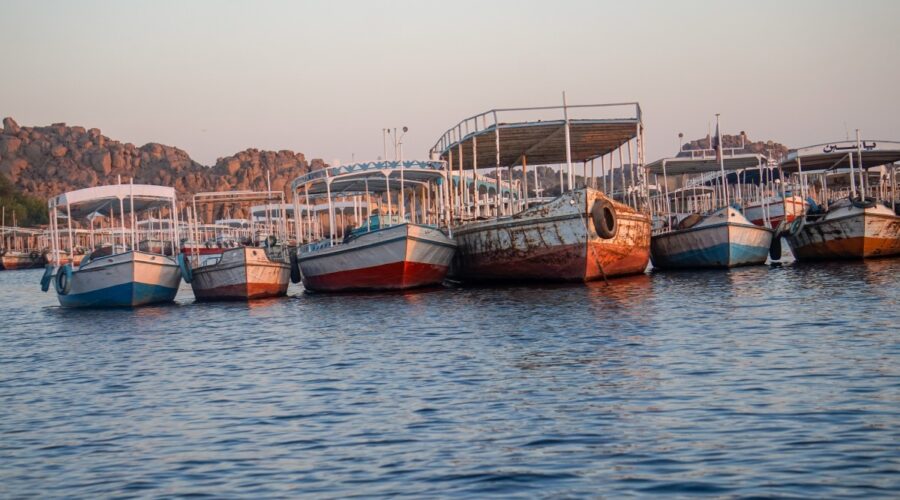With the world’s attention focused on the coronavirus pandemic, a long-simmering water dispute in Africa is nearing a rolling boil. Behind this dispute is a history of unjust water distribution, a century-old colonial agreement, and a need for electrification. The culmination of the dispute was the construction of the largest hydroelectric dam in Ethiopia and Africa with a 72 billion liter reservoir downstream the river Nile. Filling this enormous dam will have serious implications on the water quotas of Egypt and Sudan.
This issue has been a matter of dispute between the three countries over the past ten years. Around the same time, the Ethiopian government decided to construct the dam, another ambitious electricity generation project was proposed in the Sahara Desert: Desertec. The project aimed to harvest the solar power in the Sahara (spanning North Africa) and transmit most of this electricity to power Europe. In this article, I argue that while the Desertec project would have produced sustainable and clean energy on the continent that needs it the most, the vast majority of electricity is intended for consumption in Europe. Had the project developers adopted a more inclusive approach to sustainable development, there would have been a more evenly balanced project with beneficiaries located in both Europe and in Sub-Saharan Africa. More importantly, electricity needs in Sub-Saharan Africa could have been satisfied without the need to construct a large-scale hydropower plant that puts the water supply in other countries at risk.
Historical context
Sharing the water of the world’s longest river between eleven countries is a tricky business. In 1929, the allocation of the Nile’s water was set out between Britain (supposedly representing its colonies in the Nile River Basin) and Egypt. At that time Egypt was “the Egyptian kingdom”, a British protectorate with territory spanning what is now Egypt, Sudan, and South Sudan. This agreement made sure that Egypt and Sudan got the lion’s share – almost 61 percent – of the Nile water. It also granted Egypt, as the downstream country, veto power over construction projects on the Nile River or any of its tributaries in an effort to minimize any interference with the river’s flow. This treaty has been challenged by many East African countries after gaining independence. However, all attempts to reshuffle Nile water quotas have so far been in vain.
National realities
A lot has changed since 1929. Nile basin countries gained independence from Britain and other colonial powers, and a huge demographic shift took place across all those countries where populations increased between three and fivefold. Economies also developed in the Nile basin countries; however, this economic advancement has been disproportionate. For example, electrification rates vary widely in those countries, from just 11 percent (Burundi) to 100 percent (Egypt). One of the many reasons Egypt managed to reach the highest electrification rate among all Nile Basin countries has been the construction of the 2 GW High Dam in Aswan in the 1960s. Paradoxically, water and electricity have been among the most mismanaged resources in Egypt. Both have been, until recently, heavily subsidized across all sectors leading to general misuse.
A scramble for resources: The Grand Ethiopian Renaissance Dam (GERD)
With Egypt reaching a relatively high level of development, it isn’t surprising to see other countries willing to exploit the Nile for electricity too. In 2011, the Ethiopian government laid the foundation for the construction of the GERD, a massive 6.5 GW dam on the Nile that would produce the electricity needed to bring Ethiopia out of its darkness – currently, only 45 percent of the Ethiopian population has access to electricity. With the construction of the dam, Ethiopia would be able to fulfill its energy demands and export electricity to neighboring countries. The project quickly became a national undertaking and, unsurprisingly, a matter of contention between Ethiopia and its fellow Nile basin countries, especially Egypt and Sudan. The Nile River is the principal source of fresh water for both countries, and with the dam’s reservoir taking between 10 to 15 years to fill up, Egypt’s and Sudan’s water quotas are feared to be affected. This poses an existential threat to Egypt. Extensive negotiations have been going on since 2011 to reach an agreement but have, so far, remained largely inconclusive with Ethiopia proceeding with the construction of the dam and filling the reservoir.
Desertec
In 2009, when the construction of the GERD started, a group of German companies put forward an innovative yet highly controversial idea to exploit another resource in Africa for electricity – the sun. “What if Europe used the solar power in the deserted lands of the Sahara to supply all of its electric needs?” This question gave rise to the Desertec project. The underlying premise is that if Europe used around 110 square kilometers of the Sahara, it could install concentrated solar power plants and extend underwater cables to supply part of its electricity needs from a clean and sustainable source. This would help Europe meet its emission reduction targets and help maintain its energy security away from Russia. Part of the electricity would have been dedicated to regional development for example with solar water desalination plants.

The Desertec project landed with a splash. Some supporters of the project considered the project to be “visionary” and one that will promote the use of a sustainable energy source and help fight climate change. Critics of the project thought of the project as “renewable energy grabbing,” bringing to mind memories of European colonialism in North Africa. Moreover, few development actors from North African countries were involved in the project development, and there was almost no representation from the local communities. The project also faced other challenges that hindered its implementation and largely brought it to a halt in 2013.

What if?
The idea behind the Desertec project was indeed ambitious. However, the project was primarily focused on how to benefit Europe, a region whose advanced economies have no issues with energy access or a lack of resources themselves. Had the project focused on fortifying electricity interconnections across the highly electrified and solar power-rich North Africa and its sub-Saharan neighbors and Europe, the outcome would have been very different. It would have helped those countries leapfrog to renewable energy use and spurred direly needed cooperative and sustainable development in those countries. If it had adopted a more inclusive approach to making sure all the stakeholders involved were consulted, electricity could have been supplied without entering into the water dispute brought about by the construction of the GERD.
Lastly, had the Desertec project expanded its scope of development efforts to include sub-Saharan countries, it might have played a role in hindering the flow of another, more valuable resource – the human resource. The project would have offered an opportunity for participant countries to contribute to and benefit from the development of the project. It could have also offered a good chance for knowledge transfer between the European and African counterparts and collaborative learning. Adopting this approach of inclusive growth where people are included in decisions related to their own development and livelihoods could have made migrants less likely to leave their homes and, as we see today, venture across North Africa and into the treacherous waters of the Mediterranean in hope of a better life in Europe.
The moral of the story
Those two mega-projects, GERD and Desertec, offer an important and real-life example of the importance of inclusive sustainable development. While the output of both projects is the same – electricity – one of the mainstays of development, the approaches are different, but neither fosters inclusive development. The GERD project compromises on the water quotas of its neighboring countries which have very few water resources other than the Nile. The Desertec project puts the energy needs of Europeans first and does not offer equal benefits to the Sub-Saharan African countries that are in dire need of electricity.


